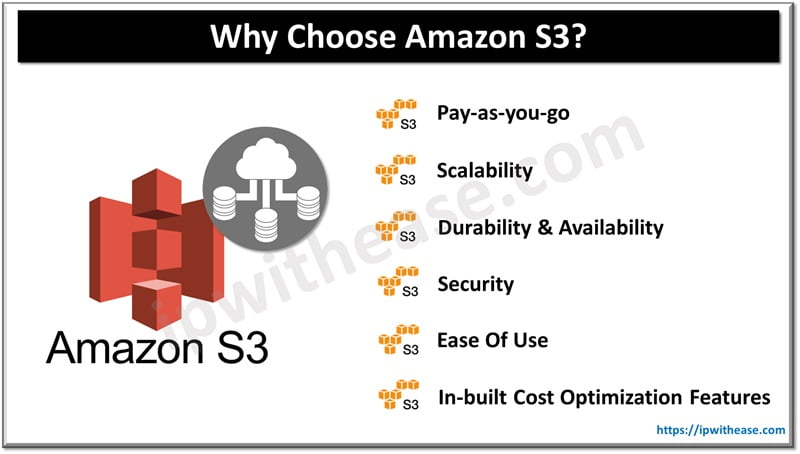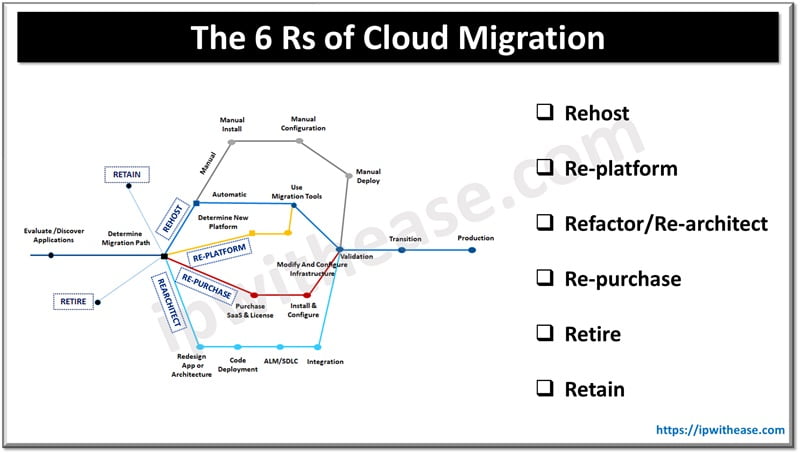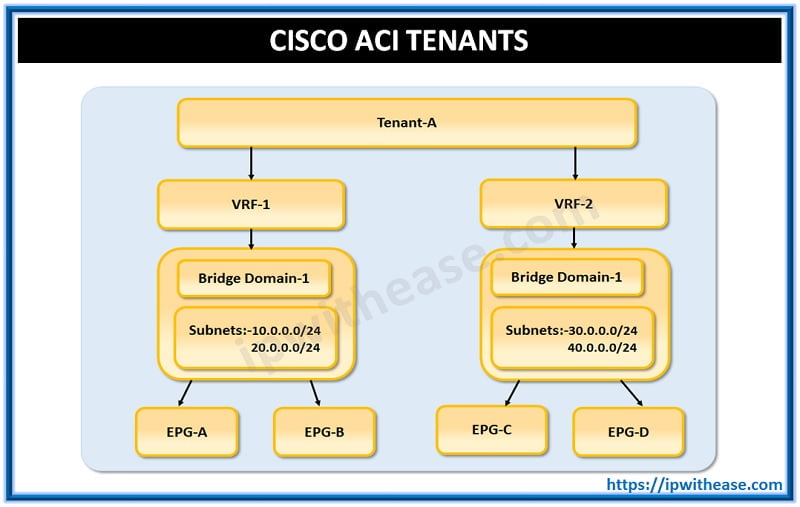Table of Contents
With the world becoming connected, data is exploding day by day. A report by IDG reveals that data volumes are growing more than 60 percent on average every month. Considering this growth, scaling on-premise infrastructure could be cumbersome and time-expensive for many business owners. Cloud provides a dynamic infrastructure that grows automatically as a business grows.
This is why the cloud market is growing. The global computing market is projected to grow at a CAGR of 17% from 2023 to 2032. AWS contributes the most to this segment by capturing over 30% of the market. Cloud computing enjoys immense popularity due to the benefits it offers. If we analyze cloud market trends, more companies will migrate to the cloud in the coming years.
Amazon AWS is the world’s renowned cloud computing platform, with the highest number of services, higher than any service provider worldwide.
If considering a reliable and secure object storage solution, you should look at Amazon S3. What is an object storage solution? What benefits does S3 provide to businesses? In this blog, we will explore all these factors.
Let’s get started.
What is AWS
AWS, or Amazon Web Services, is the world’s most popular cloud platform, powering millions of businesses worldwide. It offers infrastructure as a service (IaaS), allowing businesses to store data and run and develop their applications without lengthy setup and major upfront investment.
Its services include compute, database, storage, development platforms and services, management tools, and more.
Amazon Simple Storage Service falls under object storage service, more than a storage service. Object storage is a technology designed to store and manage unstructured data. An object inside an S3 bucket can be anything from emails to audio and video, data from various devices, etc. It can handle enormous amounts of data, ranging from many TBs to petabytes.
Businesses use it for different use cases, such as mobile apps, websites, backups, archives, data lakes, big data analytics, and IoT devices. Simply put, it stores different kinds of data as follows:
- Data lakes, if you don’t know, are large volumes of structured, semi-structured, and unstructured data.
- You can store data collected from sensors and generated by IoT devices.
- You can host media files, user data, or application data for mobile applications and analyze large datasets.
It offers you buckets to store and identify data easily. This means that objects are uniquely identified by a key (the object’s name) within the bucket.
The Challenges of Traditional Storage
On-premise storage systems lock business owners in fixed capacity, and scaling is not always smooth. Besides, there are some limitations with traditional storage, as follows:
1. Scaling is not smooth
Scaling traditional storage is a pain. It is a lengthy and never-ending process that may take weeks to months to evaluate, from finding a supplier to procuring hardware and installing them. Elastic scaling is another thing that you will miss in on-site scaling. On-site infrastructure may lock businesses into fixed capacities. We will look into elastic scaling when describing the nature of Amazon S3.
2. Major upfront investment
Traditional storage also requires a major upfront investment in hardware and software. It can be expensive when you are in need for temporary storage solution.
3. Legacy systems & technology
Cloud service providers offer you high-performance computing services, which means you will have access to modern technologies and cutting-edge tools at a fraction of the cost required to maintain on-premise infrastructure.
On the other hand, businesses can leverage an advanced ecosystem built by experts with SaaS to solve their complex problems. Besides being cost-effective and secure, SaaS provides several other benefits to businesses that we will explore in this section.
Features Amazon S3
S3 offers several benefits, including security, performance, and data availability being the most apparent. Others, while they look obvious, deliver significant benefits. This is why S3 remains the backbone of millions of businesses across the globe.
Pay-as-you-go
Many businesses hesitate to invest in technology they are unaware of; AWS has the solution to this problem, providing businesses with a transparent subscription model where you pay only for what you use. Furthermore, this platform could be tricky and overwhelming; the pay-as-you-go pricing model reduces barriers for customers who may be hesitant to invest or may have demand for a short period of time.
Scalability
It is elastically scalable, which means it can be used for small projects to big ones with many TBs of data. But here, the word elasticity means it can be further scaled down. Here’s how it works. Let’s assume your website’s traffic grows during a seasonal sale, and when the sale is over, you may not need additional capacity anymore.
On-premise storage systems do not provide this kind of flexibility, and the additional resource would remain underused till the next seasonal sale.
Let’s assume another scenario is when your website or application suddenly experiences a wave of traffic. Cloud-based S3 can scale quickly with automated systems.
Durability and Availability
S3 guarantees 99.99% durability over a year, which means the service can be down for as much as 8h45m56s per year before they’re in violation. Furthermore, Amazon states, that it is engineered to be 99.999999999% durable, which means, if you store ten million things in Amazon S3. On average, you can expect to lose only one of those things every ten thousand years. That’s how good Amazon S3 is at keeping your data safe.
Imagine how much you will need to invest in building infrastructure that is 99.9% available and 99,999999999% (11 times nine).
Security
S3 offers advanced security features, including encryption and access control mechanisms, and supports 143 security standards and compliance certifications, including PCI-DSS, HIPAA/HITECH, FedRAMP, GDPR, FIPS 1402, and NIST 800171.
Ease of Use
It is a web-based management console you can use anytime and anywhere. Those who are familiar with cloud storage concepts can use it easily. Moreover, you can find well-documented APIs to perform different tasks, including uploading, managing, and retrieving data.
Related: AWS Cloud-Front Setup with S3 bucket as Origin

Why Choose Amazon S3 for Cost-Effective Cloud Storage?
Amazon S3 provides three different storage tiers:
- S3 standard for frequently-accessed data
- S3 Express One Zone for most frequently accessed data
- S3 Standard-Infrequent Access and S3 One Zone-Infrequent Access for less frequently accessed data
- S3 Glacier Flexible Retrieval for archived data
- S3 Glacier Deep Archive for long-term archive
Depending on your needs, you may choose a particular tier. By choosing the right tier, you can save a lot. Canva, a popular graphic design platform, published a case study in which they mentioned how they saved millions by choosing the right S3 tier.
Pay-as-you-go Model
It doesn’t lock you in a model where you need to invest upfront or pay a fixed price periodically. Instead, it charges you for what you use. This pricing model is a win-win and highly beneficial, eliminating upfront fees and minimizing financial risk.
This is highly beneficial when traffic surges unexpectedly. For example, during a festive sale, traffic might surge. But you don’t know how much resources you need to handle the surge. The pay-as-you-go pricing model saves you from overspending.
In-built Cost Optimization Features
As mentioned above, it provides different tiers for different use cases. However, if you are not sure about which tier is right for hosting data, intelligent tiering comes into play. It can dynamically place your data in a cost-efficient tier, leveraging artificial intelligence and analyzing access patterns.
Let’s say some portions of your data are frequently accessed while others remain less accessible. With intelligent tiering, you can assign this task to your service to put it in the most cost-effective service tier. The best part is this process is fully automated.
Amazon S3 pricing
The cost of using this service depends on several factors, including the storage class used, data transfer, add-ons, etc. Let’s briefly understand these terms to understand how Amazon S3 pricing works.
- Storage Costs: If you use the S3 standard, which is an ideal tier for storing frequently accessed data, you will be charged higher; however, the more data you have in this tier, the less you will be charged.
- Data Transfer cost: AWS S3 doesn’t charge for uploading data. You can transfer any amount of data from different sources, including different AWS services and external internet sources.
- However, you will be charged for transferring data from your S3 buckets to other sources. These fees are tiered, meaning the cost per gigabyte decreases as your monthly transfer volume increases.
- Request Fees: You will be charged for certain actions like listing objects, setting tags, and lifecycle transitions and have per-request fees.
- Management and Analytics cost: It includes S3 Inventory and S3 Object Tagging to manage and categorize data. You will be charged extra for utilizing these features.
Moreover, you can make use of AWS calculator to find out how much it will cost to use these tools. Alternatively, you can hire a reputed cloud consultant, and they will create the most cost-effective AWS solution for you.
Conclusion
In this article, we have discussed the benefits Amazon AWS S3 offers to businesses, explaining its use cases, features, and pricing structure.
Amazon S3 addresses the challenges of traditional storage by offering scalability, durability, security, cost-effectiveness, and ease of use. Its pay-as-you-go model, coupled with optimized storage tiers and intelligent tiering, ensures that businesses only pay for the resources they consume, optimizing cost efficiency.
However, you may find it difficult if you don’t have prior experience with the AWS ecosystem. In this case, you can hire an AWS consultant to get started with AWS services, including AWS S3.
ABOUT THE AUTHOR
IPwithease is aimed at sharing knowledge across varied domains like Network, Security, Virtualization, Software, Wireless, etc.



